Analyzing Intel Core M Performance: How 5Y10 can beat 5Y71 & the OEMs' Dilemma
by Brett Howse & Ian Cutress on April 8, 2015 8:00 AM EST3DMark Ice Storm Unlimited Results
Ice Storm Unlimited is quite a bit different than the last two benchmarks. The test is built for smartphones and tablets, so is far less demanding than the other GPU benchmarks. There are two GPU tests, and a physics test, and as you will see in the graphs, when those workloads are occurring is very obvious. The overall benchmark is quite short though, which allows the devices that have more thermal issues, but higher overall turbo frequencies, to keep the frequencies up much more. It is basically the equivalent of a CPU burst workload, except mostly run on the GPU.
The Core i5 does not even flinch at this workload, even leveraging its turbo when needed. The Venue 11 Pro is the most interesting graph because it so clearly defines when the actual work is happening. Because the duration is so short, it is able to turbo quite high, and the GPU frequencies are not throttled too much. The ASUS does have to throttle the CPU to keep the GPU frequency up on this test. The Yoga 3 Pro shows quite a strong result in this very short test.
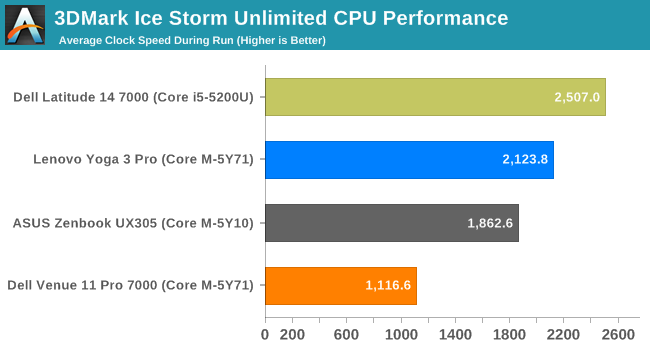
Looking at the average CPU speeds, the Yoga 3 Pro jumps way out in front. The Venue 11 Pro is quite far behind, but as you can see in the graphs, when the work was required, it did have thermal headroom available to turbo.
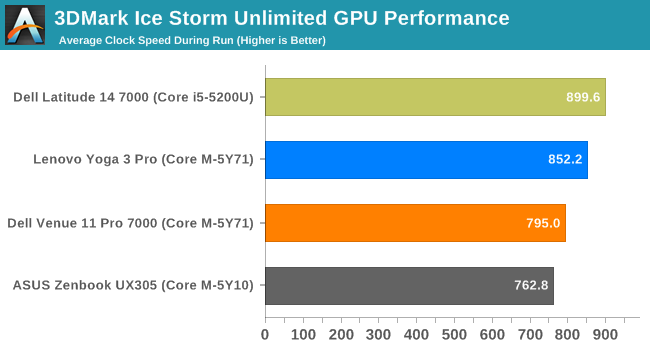
On the GPU front, the Yoga 3 Pro is almost at the same average as the Core i5 in this test, as both have the same base and turbo frequencies. The Venue 11 is only a bit behind, and the ASUS falls to third due to the 100 MHz frequency deficit that the 5Y10 has on the GPU compared to the 5Y71 processor.

On the SoC temperature side, none of the devices struggle with temperature on such a short test.
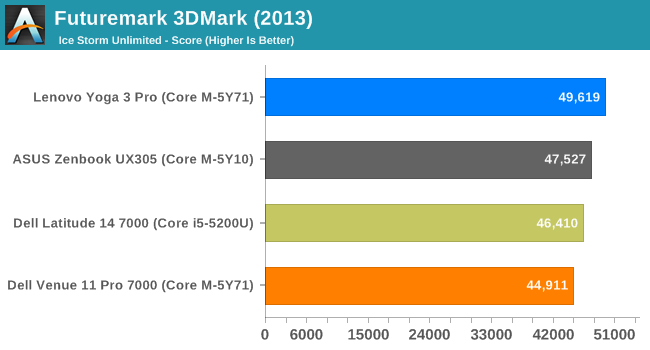
On such a short test, the Core M devices all do very well, and the fastest Core M model in the Yoga 3 Pro tops this GPU test. It is quite a bit in front of the rest of the devices, showing that with active cooling, it can still get a lot of work done in a short amount of time. Remember that the Core i5 Dell Latitude is the only device with single-channel memory, which hurts it most in the GPU tests and explains why it is below the Core M devices despite much higher average frequencies for both the CPU and GPU.


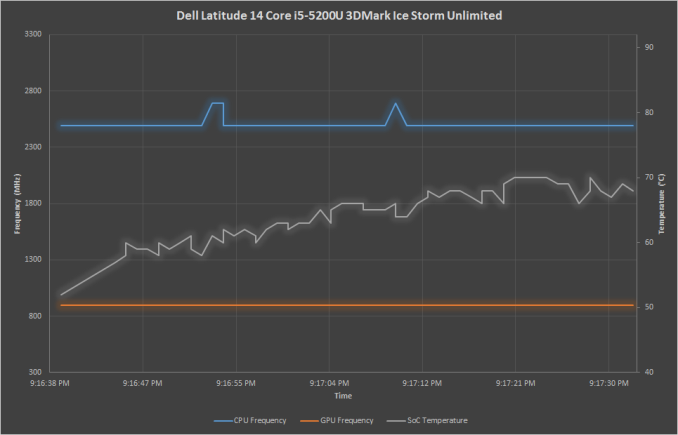
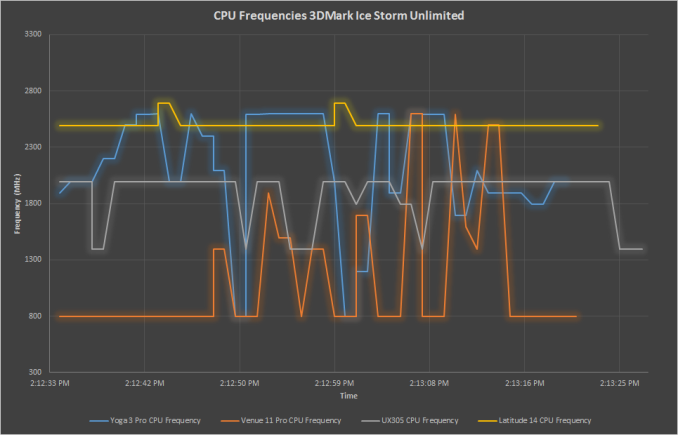
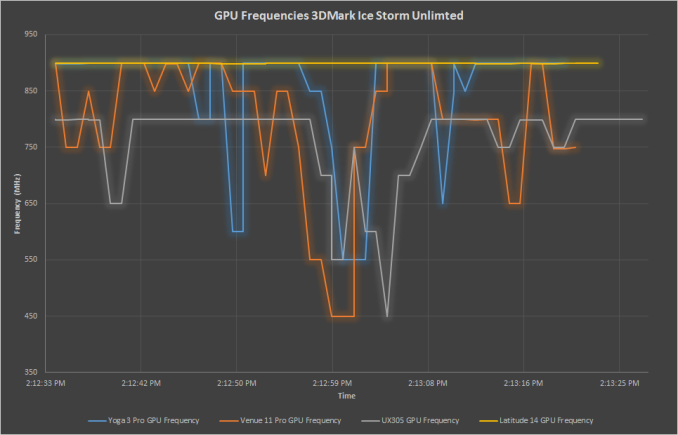









110 Comments
View All Comments
wintermute000 - Friday, April 10, 2015 - link
I actually want to see comparisons with desktops (esp older ones like Sandy era)ToTTenTranz - Wednesday, April 8, 2015 - link
Is there a review of the Dell Venue Pro 7000 coming up?In Europe, that tablet is priced similarly to the non-Pro Surface 3, so it would be interesting to make a comparison between a Core M and a Cherry Trail X7 device in a similar form factor regarding performance and battery life.
Brett Howse - Wednesday, April 8, 2015 - link
Yes.Daishi83 - Wednesday, April 8, 2015 - link
How about the T300 Chi? Preferably with FHD displayBrett Howse - Wednesday, April 8, 2015 - link
I'm but one man, but it is on my radar.kyuu - Wednesday, April 8, 2015 - link
It seems to me that the issue with the Yoga isn't poor cooling per se, but the inexplicable decision to have a target CPU temp of 65 degrees under load. If they allowed it to go up to 90 as the other devices do, it would almost certainly be the best performer.dusk007 - Thursday, April 9, 2015 - link
I would prefer it the way it is. Maybe it would be good if the user could decide by switching power plans. Not sure how it works.But generally I would not do much work that requires sustained performance on such a hybrid yoga. It is good for bursty workloads and stays cool even on high load flash website like a twitch high resolution stream (which heats my 15" MBP quite a bit). If it gets the work done while being cool to touch it is better. If you put it on a table it can be quite hot as long as the keyboard is reasonably cool. But pick it up and use it actually on your lap in normal or tablet mode, that 65C temp limit is a godsend.
It theory that should be in the windows power plan so one can just switch it to something else when performance means more than cool operation. I think in such a notebook performance should take a back seat.
vegemeister - Friday, April 10, 2015 - link
Increasing the max temperature wouldn't make it run any hotter unless you actually needed the performance.tsk2k - Wednesday, April 8, 2015 - link
Good read. I'm curious to see whether skylake core M improves much over this when it launches later this year.Crunchy005 - Wednesday, April 8, 2015 - link
Performance gains between archs in the same TDP...I feel between 1-5%? Haven't seen any huge performance gains in a long time just minor improvements.